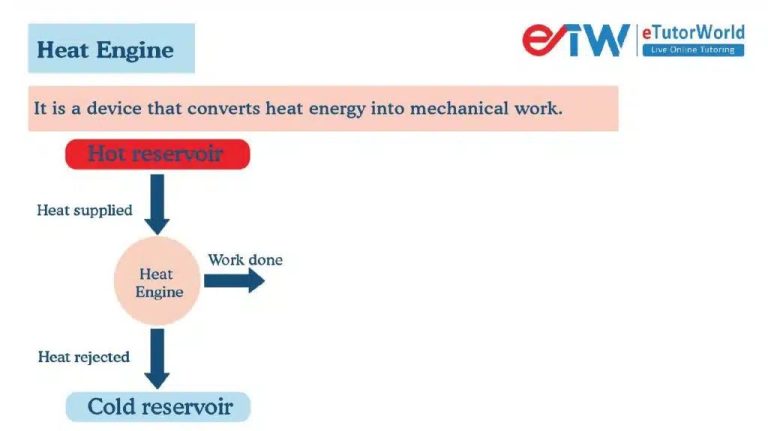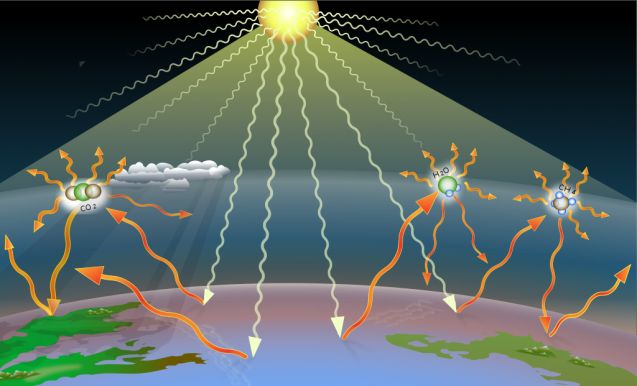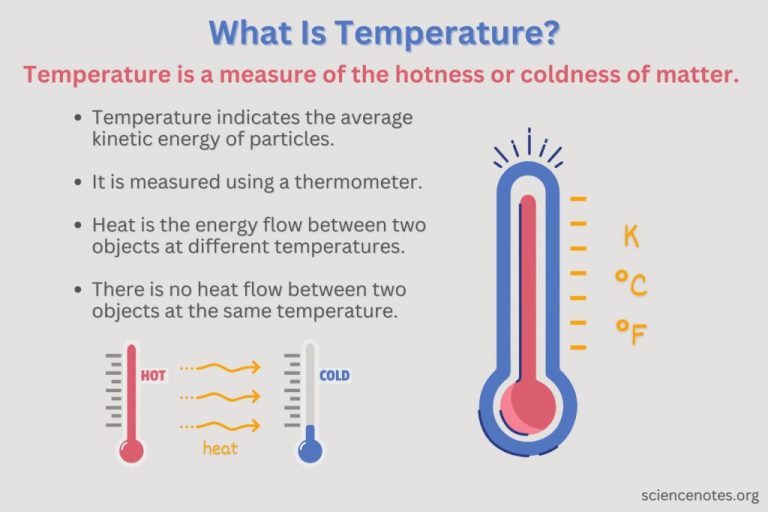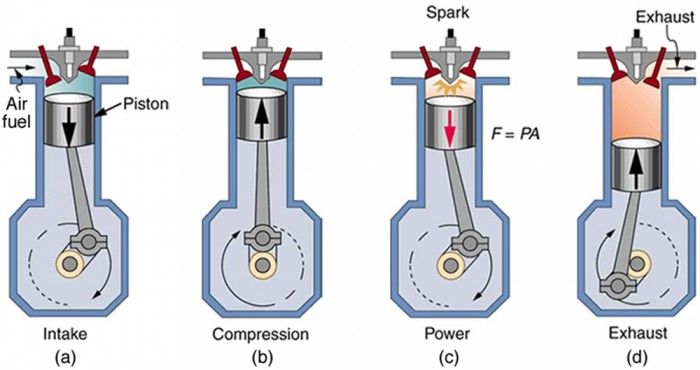What Is The Main Source Of Heat?
Heat energy is essential for life and important in many scientific and technological processes. This article will provide an overview of the main natural and artificial sources that generate heat on Earth. We will start by defining heat and temperature, and distinguishing between these related but distinct concepts.
Heat refers to the total amount of kinetic energy due to molecular motion in a substance. Temperature is a measure of the average kinetic energy of molecules and atoms. As heat is added to a system, molecular motion increases and temperature rises.
Heat flows spontaneously from higher temperature to lower temperature. It can be transferred between substances through processes like conduction, convection and radiation. Understanding where heat comes from and how it flows is crucial across many fields including physics, chemistry, climatology, engineering and more.
The Sun
The sun is the biggest source of most heat on Earth. As a star, the sun produces immense energy through nuclear fusion reactions in its core. This energy radiates outward in all directions in the form of electromagnetic radiation. About half of the radiation that reaches Earth is in the visible light spectrum while the other half is in ultraviolet, infrared, and other wavelengths. When the sun’s rays hit the Earth, the energy is absorbed and converted into heat. Earth’s entire climate system is driven by this constant input of solar radiation from the sun. Without the heating effect of the sun, the average temperature on Earth would be -18°C and the planet would be frozen.
The amount of incoming solar radiation varies based on the time of day, time of year, and location on Earth. When radiation from the sun hits the Earth perpendicular to the surface near the equator, it is most concentrated and provides the greatest heating. Solar intensity diminishes closer to the poles where sunlight strikes the surface at an oblique angle. The sun also follows an 11 year cycle of activity, where more radiation is emitted during solar maximum years versus solar minimum years. This cyclic variation along with other factors like volcanic eruptions, impact Earth’s climate and average temperatures over years or decades. But in the end, the sun provides the original source for nearly all heat on our planet.
Friction
Friction is a force that occurs when two surfaces rub against each other. The friction between the surfaces converts kinetic energy into heat energy. The amount of heat generated depends on the force pressing the surfaces together and the speed they are moving.
Some examples of friction generating heat in everyday life include:
- Rubbing your hands together to warm them up
- The heat from car brakes due to the brake pads rubbing against the wheel
- Drilling into wood or metal causes heat from friction between the drill and the material
On a larger scale, seismic faults are places where tectonic plates rub against each other due to the earth’s internal motions. The heat generated by this huge frictional force is responsible for much of the Earth’s volcanic and geothermal activity.
Chemical Reactions
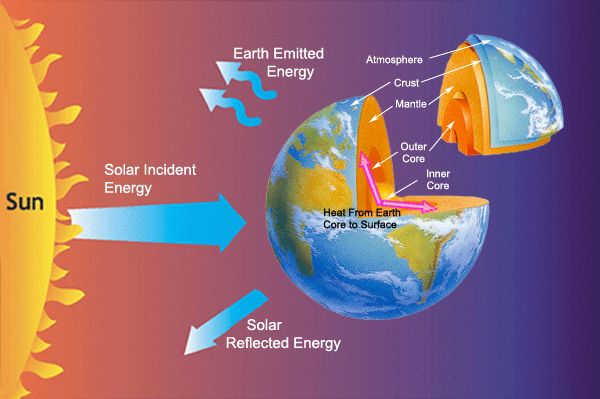
Chemical reactions involve the rearranging of atoms and molecules to form new substances. Some chemical reactions release energy in the form of heat. These are called exothermic reactions. The amount of heat released depends on the types of reactants, how they are chemically rearranged, and the difference in energy between the starting reactants and the final products.
Some examples of exothermic chemical reactions that produce heat energy include:
– Combustion reactions: This includes burning of fuels like wood, natural gas, gasoline, coal etc. The combustion of hydrocarbon fuels involves reacting them with oxygen to form carbon dioxide and water, releasing a substantial amount of heat energy.
– Oxidation reactions: Rusting of iron and corrosion of metals involve oxidation that gives off heat. Our bodies also undergo oxidation of food molecules during cellular respiration to release energy.
– Acid-base neutralization reactions: When an acid and base are mixed, the neutralization reaction that occurs releases heat. This reaction is employed in instant hand warmers.
On a global scale, the exothermic chemical reactions that occur during natural processes like volcanic eruptions and decomposition of organic matter contribute to thermal energy on Earth. Exothermic reactions are also harnessed in a controlled manner for heating applications and energy generation. The amount of heat produced can be optimized by choosing appropriate reagents.
Radioactive Decay
Much of the heat within the Earth is generated through radioactive decay. Radioactive decay is the process in which an unstable atomic nucleus loses energy by emitting radiation. There are several radioactive isotopes that contribute to the Earth’s internal heat through this decay process.
The decay of uranium-238, uranium-235, thorium-232, and potassium-40 isotopes collectively produce over 80% of the heat generated within the Earth. These radioactive elements are found abundantly within the Earth’s crust and mantle. As they decay, they release heat that gradually transfers to the surface.
The decay occurs at the atomic level, with unstable isotopes spontaneously transforming into more stable isotopes over time. Different radioactive isotopes have widely varying half-lives, ranging from millions to billions of years. The energy emitted during the decay process is in the form of ionizing radiation, such as alpha particles, beta particles, and gamma rays.
This radioactive heat generation is often concentrated near the boundaries of tectonic plates and around volcanically active areas. However, radioactive decay occurs ubiquitously within Earth’s interior. This volcanic activity and plate tectonics circulates the Earth’s radioactive heat, gradually releasing it to the surface environment over geological timescales.
Electrical Current
Electrical current flowing through a conductor also generates heat. This occurs due to the resistance of the material to electron flow. As electrons move through a conductor, they collide with the fixed atoms of the material, resulting in friction and heat generation. The amount of heat released depends on the resistance and the amount of current flowing. This effect is used in many heating appliances such as electric stoves, space heaters, and even lights to some extent. The higher the current, the greater the heat produced. This resistance heating is an important source of thermal energy in many electronics and appliances we use everyday.
Metabolism
The human body generates heat as a byproduct of metabolic processes that are essential for life. Metabolism refers to all of the chemical reactions that take place within the body’s cells to maintain life and normal functioning. Some key metabolic processes that produce heat include:
- Cellular respiration – The conversion of food nutrients like fats, carbohydrates, and proteins into energy in the form of ATP. This process occurs in every cell of the body and produces heat as a byproduct.
- Digestion – The breakdown of food and absorption of nutrients generates heat. The digestion process requires energy expenditure and enzymatic reactions that give off excess heat.
- Muscle contraction – When muscles contract to enable body movement, they produce heat from the metabolic reactions required to do mechanical work.
- Synthesis reactions – The construction of complex molecules like proteins, lipids, nucleic acids etc. involves energy-releasing reactions that liberate heat.
In total, these metabolic activities taking place at the cellular level on a continual basis represent a significant internal heat source for endothermic organisms like humans. The amount of heat released depends on the body’s metabolic rate, which varies with many factors like age, body size, and physical activity level.
Fossil Fuels
Fossil fuels like coal, oil and natural gas are a major source of heat energy worldwide. They are formed from the anaerobic decomposition of buried dead organisms over millions of years. Fossil fuels are burned to release stored chemical energy in the form of heat. This heat energy is used for electricity generation, heating, cooking and transportation.
The burning of fossil fuels releases vast amounts of heat through combustion. For example, natural gas is mostly methane, which reacts with oxygen to produce carbon dioxide, water vapor and approximately 890 kJ of energy per mole of methane. This heat energy can be captured and utilized in various applications. Fossil fuel power plants burn coal, oil or natural gas to boil water into steam that spins turbines to generate electricity. Much of the world’s heating and cooking relies on burning fossil fuels as well.
While fossil fuels produce abundant heat energy through combustion, their use also leads to carbon dioxide and other greenhouse gas emissions. This contributes significantly to global climate change. Nevertheless, fossil fuels currently supply over 80% of the world’s energy needs, with coal providing about 30% of global primary energy. Moving forward, renewable energy sources will be needed to provide heat while reducing emissions.
Geothermal Energy
An important natural source of heat comes from geothermal energy within the Earth. The temperature increases with depth into the Earth’s core due to heat produced during the original formation of the planet as well as ongoing radioactive decay of materials. This geothermal gradient means that temperatures can reach over 600°C at 10 km below the surface. Geothermal energy is used by tapping into this underground reservoir of heat in the form of:
- Hydrothermal resources – natural hot water or steam reservoirs
- Geopressured resources – hot water and methane gas under pressure
- Hot dry rock resources – accessible through drilling and hydraulic fracturing
Geothermal power plants are built at these natural geothermal reservoirs to generate electricity. The hot water or steam from the reservoirs can directly drive turbine generators. In hot dry rock resources, water is pumped down injection wells through the hot rocks to collect heat, and brought back up production wells to power turbines. Geothermal heating and cooling systems can also directly use underground temperatures for residential and commercial buildings with a ground source heat pump.
Conclusion
In conclusion, there are several natural and artificial processes that are primary sources of heat on Earth. The main natural source of heat is the Sun, which radiates immense amounts of energy in the form of light and heat. Other natural sources include geothermal energy from the Earth’s core and mantle, friction from tectonic plate movements, exothermic chemical reactions, and radioactive decay of elements in the Earth’s crust.
Major artificial or human-created sources include the burning of fossil fuels like coal, oil, and natural gas to generate electricity and power engines and the use of nuclear fission in nuclear power plants. Electric current passing through wires also generates heat through resistance. Lastly, the metabolic processes in living organisms, especially humans, produce heat as a byproduct of turning food into energy.
In summary, while the Sun provides the bulk of external heating, both natural and artificial processes on Earth itself also contribute significantly as primary sources of heat in various capacities.

